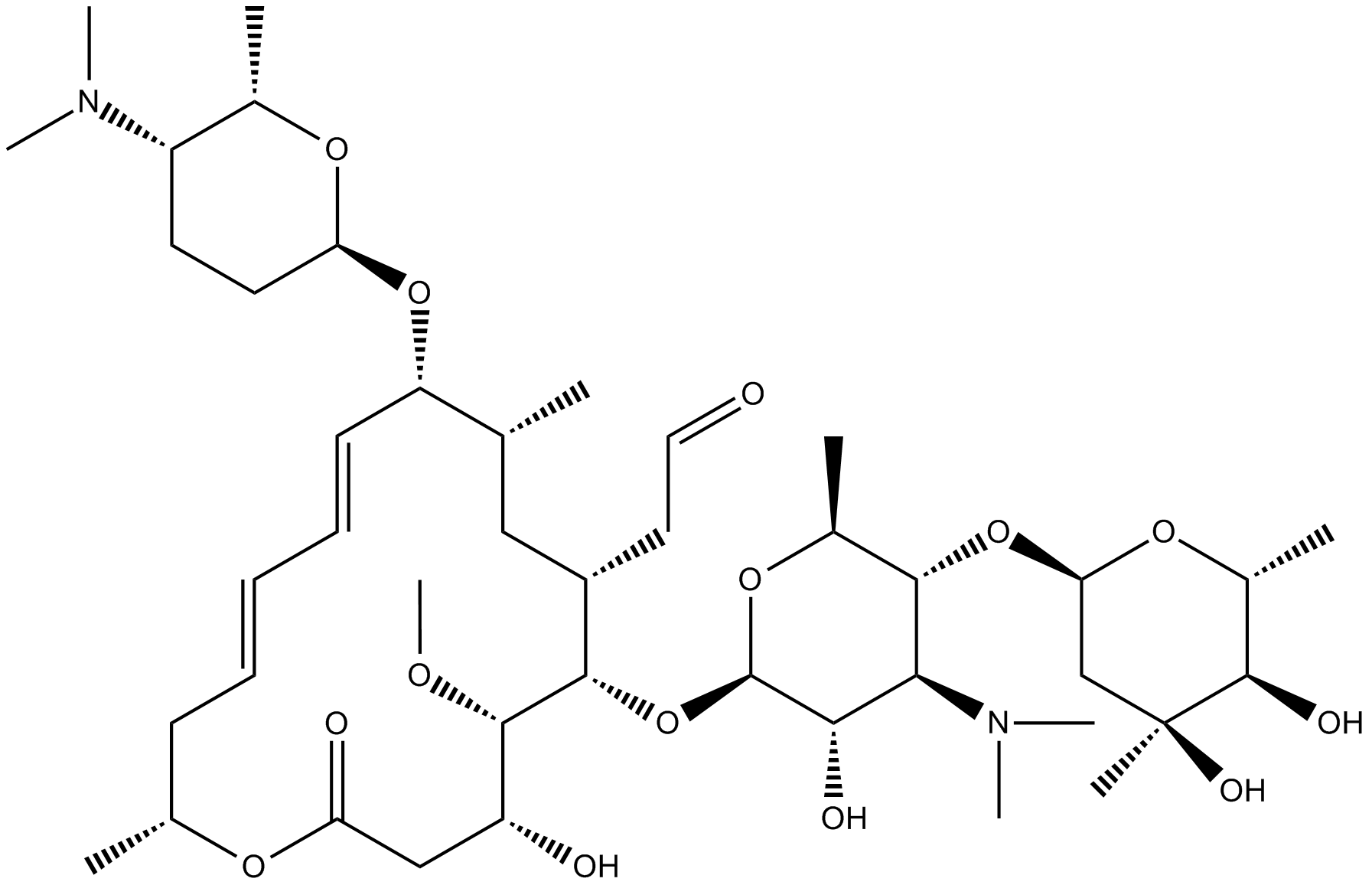Spiramycin (Synonyms: Formacidine, NSC 55926, Rovamycine) |
| Katalog-Nr.GC18047 |
Spiramycin (Rovamycin) ist ein von Streptomyces ambofaciens produziertes Makrolid-Antibiotikum mit AktivitÄten gegen Bakterien und Toxoplasma gondii und hat auch eine antiparasitÄre Wirkung.
Products are for research use only. Not for human use. We do not sell to patients.

Cas No.: 8025-81-8
Sample solution is provided at 25 µL, 10mM.
Spiramycin (Rovamycin) is a macrolide antibiotic produced by Streptomyces ambofaciens with against bacteria and Toxoplasma gondii activities, and also has antiparasitic effect. Spiramycin is composed of a 16-member lactone ring, on which three sugars (mycaminose, forosamine, and mycarose) are attached[1][2].
Spiramycin (24 hours; 1-1000 μM; T. gondii infected HeLa cells and HeLa cells) treatment reduces the cytotoxicity, and shows anti-Toxoplasma gondii activity, with IC50 values of 189 μM for HeLa cells; and 262 μM for T. gondii-infected HeLa cells[3].
Spiramycin (100 mg/kg; intraperitoneal injection; every day; for 4 days; female KM mice) treatment reduces the number of tachyzoites, and reduces hepatotoxicity and significantly enhances antioxidative effects. Spiramycin treatment also decreases in the degree of granulomatous inflammation in the liver[3].
References:
[1]. Nguyen HC, et al. Post-PKS tailoring steps of the spiramycin macrolactone ring in Streptomyces ambofaciens. Antimicrob Agents Chemother. 2013 Aug;57(8):3836-42.
[2]. Etewa SE, et al. Assessment of spiramycin-loaded chitosan nanoparticles treatment on acute and chronic toxoplasmosis in mice. J Parasit Dis. 2018 Mar;42(1):102-113.
[3]. Guo HY, et al. Synthesis and Biological Evaluation of (+)-Usnic Acid Derivatives as Potential Anti-Toxoplasma gondii Agents. J Agric Food Chem. 2019 Aug 28;67(34):9630-9642.
Average Rating: 5 (Based on Reviews and 22 reference(s) in Google Scholar.)
GLPBIO products are for RESEARCH USE ONLY. Please make sure your review or question is research based.
Required fields are marked with *




















